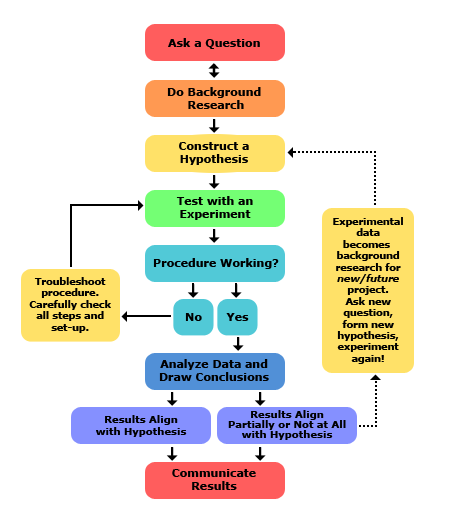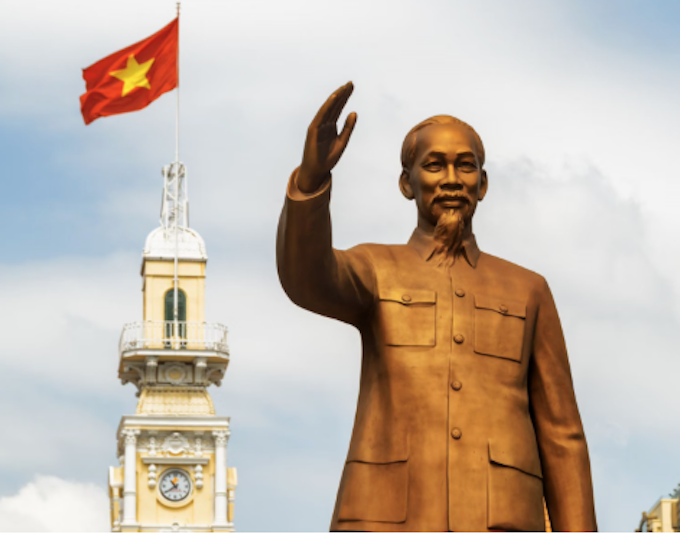One of the greatest tricks capitalism ever played on the global intelligentsia was convincing some of them that it no longer exists, that it is dead and gone, having vanished in plain sight from the face of the earth. And in the last few years, a branch of political economy has risen arguing exactly this, whereby capitalism has unraveled and devolved into techno-feudalism. That is, that capitalism has exited the stage of world history, or has started to do so, only to be replaced by techno-feudalism, i.e., a socio-economic formation, where markets have been usurped and/or abolished in favor of highly-organized and highly-controlled internet platforms, who are owned and operated by one-person, or a select few, that control every aspect of their digital fiefdoms. Techno-feudalism is the idea that capitalism has receded, along with profits and the profit-imperative, in favor of central-bank money, i.e., fiat money, now taking the place of all profit-making. For these theoreticians of techno-feudalism, capitalism is dead. And like an old battle weary baby boomer, gently easing him or herself into a warm tub, filled with Epsom salt, capitalism as well, has gently eased itself into the hot tub of techno-feudalism and dissolved itself into a new post-capitalist socio-economic regime, without kicking up a fuss.
Ultimately, this is false. It is false, in the sense that: 1) the world economy is, on most counts, functioning and operating according to the logic of capitalism, namely, that 99.9999% of the world economy continues to be all about the maximization of profit, which also includes these internet fiefdoms. In the sense that the maximization of profit by any means necessary, for share-holders, continues to be the driving force of the system. Granted, in certain instances, profits may be derived from the central-banks through quantitative easing practices, i.e., the soaking up of easy money by giant corporations, who buy back their own shares, rather than by selling commodities to consumers. Notwithstanding, from the share-holders’ perspective, this is still profit, regardless where the capital surplus comes from. Subsequently, nowadays, profits can come from anywhere in all sorts of forms, whether it is from quantitative easing, accumulation by dispossession, rent, war, and/or from interest payments etc. Wherever it comes from, it is profit through and through, a surplus, which is then classified under the category of profit or revenue, regardless of its source. Hence, if it is a surplus, it is a profit, a revenue of some kind. In the sense that, in the age of techno-capitalist-feudalism, whatever an entity or entities can get away with in the marketplace and/or the sphere of production is ultimately valid, legitimate, and normal.
Therefore, despite what some academics’ argue, profit is still the central-operating-code of all these so-called internet fiefdoms, whether they are conscious of this fact or not. True, these digital platforms are about the cultivation and harvesting of personal information, but all this information-gathering is fundamentally about amassing profit, namely, super-profits in an anonymous and indirect manner. These digital platforms convert personal data into profit, whether by selling these data-sets to advertisers, or by improving their own technology to better stimulate individual customer purchases and services on their own specific platforms. As always, the point is capitalist revenue, i.e., profit-making by any means necessary, at the lowest financial cost, as soon as possible.
And finally, 2) whatever its make-up, the newly-risen, neo-feudal tech-aristocracy continues to subscribe heart and soul to the logic of capitalism. In the sense that its origins lie in the logic of capitalism, or more specifically, the logic of capitalism super-charged to its utmost neoliberal extremes. This new aristocracy is capitalist to the core. It seeks to capitalize on resources and people, by any means, in order to amass capital for itself at the expense of the workforce/population, as it always has throughout its history. And rent is a method of amassing capital. Consequently, this new aristocracy is not a technological aristocracy per se, it is a capitalist aristocracy, first and foremost. It is an aristocracy that uses the tools of machine-technology as a means to amass power, profit, and capital, for itself. That is, this aristocracy uses the tools of machine-technology to better align itself with the dictates of the logic of capitalism. For this aristocracy, technology is not an end-in-itself, but, a means to amass more power, profit, and capital, nothing more and nothing less. Thus, capital accumulation is still the end-game of all the financial maneuvers, all the algorithmic innovations, all the rent-extractions, and all the power-plays that these internet fiefdoms engage-in. The highest possible return on capital investment continues to be the bottom-line, regardless of where this return comes from, or what the theoreticians of techno-feudalism claim. Lest we forget that these internet fiefdoms do invest massively in research and development, more so than at any other time in history.
Subsequently, the software of the system encoded upon everything and everyone is still the logic of capitalism, while the hardware of the system is continually changing and mutating into all sorts of monstrous forms. And, naturally, the theoreticians of techno-feudalism want you to solely focus on the constantly mutating hardware of the capitalist-system, forgoing the hidden immutable software of the system, namely, the software driving the whole system. In the sense that it is only in this manner that the techno-feudal argument holds any water. Forget the software, only concentrate on the hardware, and ye shall believe, believe as an enchanted zealot in the opulence of the techno-feudal sci-fi fantasy and hypothesis.
Specifically, the economic theoreticians of techno-feudalism are those individuals who would look-upon the first generation terminator model, i.e., the T-800, from the first terminator film as the only authentic cyborg worthy of being called, a terminator. While, the second generation terminator model, i.e., the T-1000, from the second installment of the terminator films would not be a terminator in their eyes, but, something totally different, something that has completely transcended the definition of what a terminator is and what it constitutes. The T-1000 is not a terminator, if you follow the logic of techno-feudalism, because it does not behave, or look, as the original terminator does. The T-1000 is made of liquid metal, while the first generation T-800 is made of living tissue, covering its stainless steel skeleton. Thereby, they are two totally different incompatible entities. Indeed, the T-1000 is not a terminator, but an entity that is totally new and different, unrecognizable as a terminator in relation to the T-800.
And, indeed, the whole set of arguments about the validity of techno-feudalism revolve around such theoretical tricks and sleights of hand. That capitalism is no longer capitalism because it does not function and operate as capitalism once did in its distant past. Capitalism has evolved into something completely different, as the initial terminator, i.e., the T-800, has evolved into something completely different, the T-1000. What the theoreticians of techno-feudalism do not notice, or simply fail to mention, is that all the multi-varied versions of capitalism, as well as the multi-varied versions of terminators, share the same immutable software. They share the same central-operating-code, which is their defining immutable characteristic. Due to the fact that the T-800 and the T-1000 were algorithmically programmed to achieve the same end, to kill John Conner by any means necessary. This is what defined these cyborg-machines as terminators, not their make-up, their radically different hardware. Just as the old form of capitalism and its newer model, i.e., techno-capitalist-feudalism, share the same end, the same code, i.e., the maximization of profit, by any means necessary, at the lowest financial cost, as soon as possible. Despite the fact that both function and operate in radically different manners and have radically different hardware.
Ultimately, to achieve and maximize capital is the algorithmic thread that unites all prior forms of capitalism with all its newest model versions, since, surplus value from the central banks, or surplus value from the exploitation of laborers, or surplus value from rent, or wherever else, amounts to the same thing, profiteering at the expense of another, regardless how that profiteering is made, or where that profiteering comes from. As a matter of fact, the tired and antiquated feudal mechanism of rent extraction was appropriated by emerging capitalism, where it was upgraded, supercharged, and welded-tight to industrial capital, as its own.
In short, capitalist rent is a type of profiteering; capitalist profit is a type of profiteering. Rent is stolen unpaid work, i.e., surplus value; profit is stolen unpaid work, i.e., surplus value. And both rent and profit are fundamental types of capitalist revenue, namely, they are two sides of the same capital coin. And both are the embodiment of magnitudes of force and influence, capable of bending existence to the will of a capitalist entity. Finally, rent and profit are methods by which to accumulate capital, in the sense that profit and rent are both capital, as well as specific modes of capital accumulation. And both have been present in and across the system since the dawn of capitalism and even before that.
Notwithstanding, the theoreticians of techno-feudalism do not acknowledge this fact. For them, profit is profit only when 1) it is private, i.e., it is strictly made by private enterprises; and 2) it comes strictly from the sphere of commodity-production, i.e., the exploitation of workers in the production sphere. While, rent is rent when it is a fee commanded and paid for, pertaining to the use of a piece of private property, whatever that property is. Specifically, for these theoreticians, rent and profit do not intermingle and they do not embody the same substance, i.e., force and influence. For them, rent and profit are different because their modes of capital accumulation are different. As a result, the theoreticians of techno-feudalism skip over many fundamental economic facts, concerning the certainty that rent and profit are capital, and that rent and profit comprise their own individual methods of capital accumulation. That is, that the end-game of both profit and rent is the same, i.e., to accumulate as much capital as force and influence will allow. Like the T-800 and the T-1000, rent and profit have the same fundamental objective, the same central-operating-code, namely, to accrue the maximum amount of capital by any means necessary, as soon as possible! In the sense that both methods of capital accumulation have been subsumed and integrated into the accumulation processes of totalitarian-capitalism. Whereby, today, profit-making and rent-extraction function and operate in tandem at the behest of the logic of capitalism and the 1 percent.
And more importantly, the whole techno-feudalist theoretical framework and argument hinges on profit and rent being radically dissimilar and distinctly separated; when, in reality, they are in principle the same. They are both surplus value, forms of power, and profiteering modes of capital accumulation, modes by which to absorb and extract value from another, gratis. Rent is paid out of newly created surplus value; and profit is paid out of newly-created surplus value. All the same, the theoreticians of techno-feudalism pass over these fundamental economic facts in silence, concealing their inherent similarities and their primary importance as capitalist gain.
Above all, the theoreticians of techno-feudalism do not give credence to Mark Fisher’s notion that capitalism is “a monstrous, infinitely plastic entity, capable of metabolizing and absorbing anything with which it comes into contact”, akin to the T-1000 terminator.1 The theoreticians of techno-feudalism do not acknowledge that capitalism can change its hardware in an infinity of forms, gothic, gruesome, and sadistic, whatever it needs to do; all the while still adhering to its immutable uncompromising software demanding endless capital accumulation. These techno-feudal theorists never mention the immutable software of capitalism, its central-operating-code, the same for the last 250 years. And just like the T-1000 terminator, capitalism will end and disappear only when its software, its central-operating-code, ends and disappears in the hellish crucible of molten metal, that is, the anarchist revolution.
For example, under the old form of capitalism we had yachts, but now, under the new form of capitalism, i.e., totalitarian-capitalism, or more importantly, techno-capitalist-feudalism, we have super-yachts. Similarly, under the old form of capitalism we had privately-owned backyard air-fields, but now, under the new form of capitalism, we have privately-owned backyard space launch centers. Of course, the theoreticians of techno-feudalism would have you believe that super-yachts, or privately-owned backyard space launch centers, are the product of a wholly different system that has abandoned the logic of capitalism. However, one can clearly see and comprehend that super-yachts and backyard space launch centers are just a logical progression of the logic of capitalism, supercharged to the Nth degree. One develops out of the other, thanks to a new fanatical form of neoliberalism, neoliberalism on methamphetamine, manically driving backwards towards feudalism redux, that is, FEUDALISM 2.0.
Indeed, even the billionaire caste is a grotesque abomination of the logic of capitalism, out of control and out of whack. In the sense that thousands must be rendered destitute and homeless in order to manufacture a single billionaire. And being Frankenstein monsters, these grotesque billionaire mutants of totalitarian-capitalism unhinged, will eventually have to be hunted down with pitchforks and blowtorches, if the multitude of peasant-workers are to overcome and abolish the horrors of techno-capitalist serfdom, once and for all.
As a result, capitalism is not dead, but, has only amplified itself to its utmost logical extreme. It has become totalitarian and super-exploitative. In the sense that the logic of capitalism still powers all the newly-risen fiefdoms of the era of techno-capitalist-feudalism. And just like the old form of capitalism, the new form of capitalism has a ruling caste, which, in most instances, is still ironically the same ruling caste that was in power during the reign of the old form of capitalism. And just like the old form of capitalism, the members of this new form of capitalism, comprising its so-called new ruling caste, continue to be the sole owners of the means and forces of production, while, the workforce/population continues to be dominated by a capitalist wage-system, like in the old days, when the old antiquated form of powdered-wig capitalism ruled supreme.
Today, just like in the past era of run-of-the-mill traditional-capitalism, peasant-workers only have their labor-power, or creative-power, to sell to the owner or owners of the means and forces of production. The only difference in-between the old form of capitalism and the new form of capitalism, i.e., the age of monopoly-capitalism and the age of super-monopoly, or techno-capitalist-feudalism, is that today peasant-workers can be paid below subsistence levels, whereas before, they were not. In fact, workers now have to work multiple jobs and more hours to make ends meet, since they have no benefits and are paid largely below subsistence levels. Therefore, the logic or software of capitalism has not disappeared. And to say that it has is a gross exaggeration. In other words, the age of monopoly has simply given way to the age of super-monopoly, namely, the dark age of techno-capitalist-feudalism. Wherein, the logic of capitalism continues to thrive and multiply, ad nauseam. Because capitalism has always been dead, dead and congealed, namely, a congealed set of power-relations, which vampire-like live the more, the more creativity they suck, from all their unsuspecting, living peasant-workers.2
In sum, the specter of capitalism haunts techno-feudalism as software, as its hidden code lodged deep within its radically incompatible ever-mutating hardware. Thereby, the specter of capitalism haunts all the theoretical machinations and the minutia of techno-feudalism, since, techno-feudalism, or more accurately, techno-capitalist-feudalism, is the result of the capital/labor relationship at its most lopsided, oppressive, and technologically dominating. The capital/labor relationship continues to hold; it continues to hold at the center of techno-feudalism, or more accurately, techno-capitalist-feudalism. In the sense that the logic of capitalism pervades, envelops, infects, and poisons, all aspects of society and techno-feudalism, since, the logic of capitalism continues to be the foundation and the fundamental under-girder of society and techno-feudalism, a foundation that techno-feudalism refuses to acknowledge or even address, adequately. (Let us not forget that, like its predecessors, techno-feudalism continues the long history of the critique of capitalism by talking once again about the central concept of capitalism, i.e., CAPITAL, whether this is monopoly-capital, rentier-capital, digital-capital, communicative-capital, surveillance-capital, and/or the new all-terrifying poltergeist of cloud-capital). In short, techno-feudalism distorts the aberrant monstrosity of techno-capitalist-feudalism, the horror-show that is the despotic age of totalitarian-capitalism, whereby, super-monopoly and super-profits are multi-varied, ruthless, and fundamentally undisciplined.
As it happens, in the dark age of techno-capitalist-feudalism, super-exploitation is 24/7. Whereupon, there is no escape or chance of relief, as the newly-minted post-industrial serfs, i.e., the 99 percent, are forever bound in all sorts of insidious Malthusian traps, financial Catch-22s, crippling debt etc., which have them all going around in circles in and across a hopeless set of bureaucratic labyrinths, all designed to keep them stationary and subservient upon the lower-stratums of the system. As a result, the ruminations of techno-feudalism are scientifically disingenuous. They skew the facts and the true reality of the billions of peasant-workers, toiling under the jackboot of capitalist exploitation, capitalist debt, capitalist rent, and a capitalist wage-system of piecemeal slavery. Subsequently, techno-feudalism is a disservice to workers. To drop the term “capitalist” from techno-capitalist-feudalism, only muddies the clear blue waters of the terminal stage of capitalist development, namely, the new dawning epoch of totalitarian-capitalism, that is, the new dystopian age of techno-capitalist-feudalism, run-amok.
Just because the old capitalist bourgeoisie has embraced digital algorithms and invasive surveillance technologies as its own, and has abstracted itself at a higher-level of socio-economic existence, away from the workforce/population, whereby, it now appears invisible and increasingly distant from the everyday lives of workers, does not mean the old capitalist bourgeoisie has melted away into thin air, or has been usurped by a new, strictly technological aristocracy. What has happened is that the old capitalist bourgeoisie has become a techno-capitalist-feudal-aristocracy, since, the logic of capitalism, capitalist profit, capitalist rent, and capitalist technological innovations, continue to inform and motivate this authoritarian feudo-capitalist aristocracy.
In the end, economic supremacy resides with the capitalists, since, they control the repressive-state-apparatuses, while the tech-lords do not. Therefore, these feudo-capitalist lords only exist by virtue of and by the good grace of traditional capitalists, who control the repressive-state-apparatuses. The tech-lords do not have their own repressive-state-apparatus, thereby, they will always remain secondary, merely a small part of the overall feudo-capitalist aristocracy, forever at the mercy of those who control the military, namely, all those blood thirsty repressive-state-apparatuses of the state-finance-corporate-aristocracy, the 1%.
In view of these damning facts, techno-feudalism is a bust, a wrong turn, a wrong-brained play on words, leading to a theoretical dead-end that only empowers capitalist supremacy at the expense of workers’ liberation and self-management. It must be jettisoned. The fact of the matter is that the logic of capitalism continues to rule, because the peasant-workers, i.e., the anarcho-proletarians, the punks have yet to overthrow the capitalist mode of production, consumption, and distribution, from the active theater of world history. Thus, within the so-called evolutionary whimper of techno-feudalism, the logic of capitalism is thriving, laughing all the way to the bank. It will never go quietly and orderly into that good night. Capitalism will only go out with a bang, a loud resounding cataclysmic bang. As capitalism came into this world soaked in blood from head to toe; and it will only leave this world gushing blood, allover the globe.3 Because, devoid of the epic blast of rampant anarchist revolution, capitalism invariably marches-on as, and in the form of, techno-capitalist-feudalism. Ergo, in the dark age of TCF:
Resistance is feudal and the guillotine is forever!
ENDNOTES:
1 Mark Fisher, Capitalist Realism (United Kingdom: Zero Books, 2009), p. 6.
2 Karl Marx, Capital (Volume One), Trans. Ben Fowkes, (London, Eng.: Penguin, 1990), p. 342.
3 Karl Marx, Capital (Volume One), p. 926.
The post The Pragmatic-Demolition of Techno-Feudalism first appeared on Dissident Voice.This post was originally published on Dissident Voice.

































 Air Company
Air Company Savor
Savor Savor
Savor








 platform will facilitate location, apprehension, and adjudication of millions of illegals in months instead of years,” Harvilicz said, referring to the since-discontinued app used by U.S. Customs and Border Protection to track immigrants.
platform will facilitate location, apprehension, and adjudication of millions of illegals in months instead of years,” Harvilicz said, referring to the since-discontinued app used by U.S. Customs and Border Protection to track immigrants.




